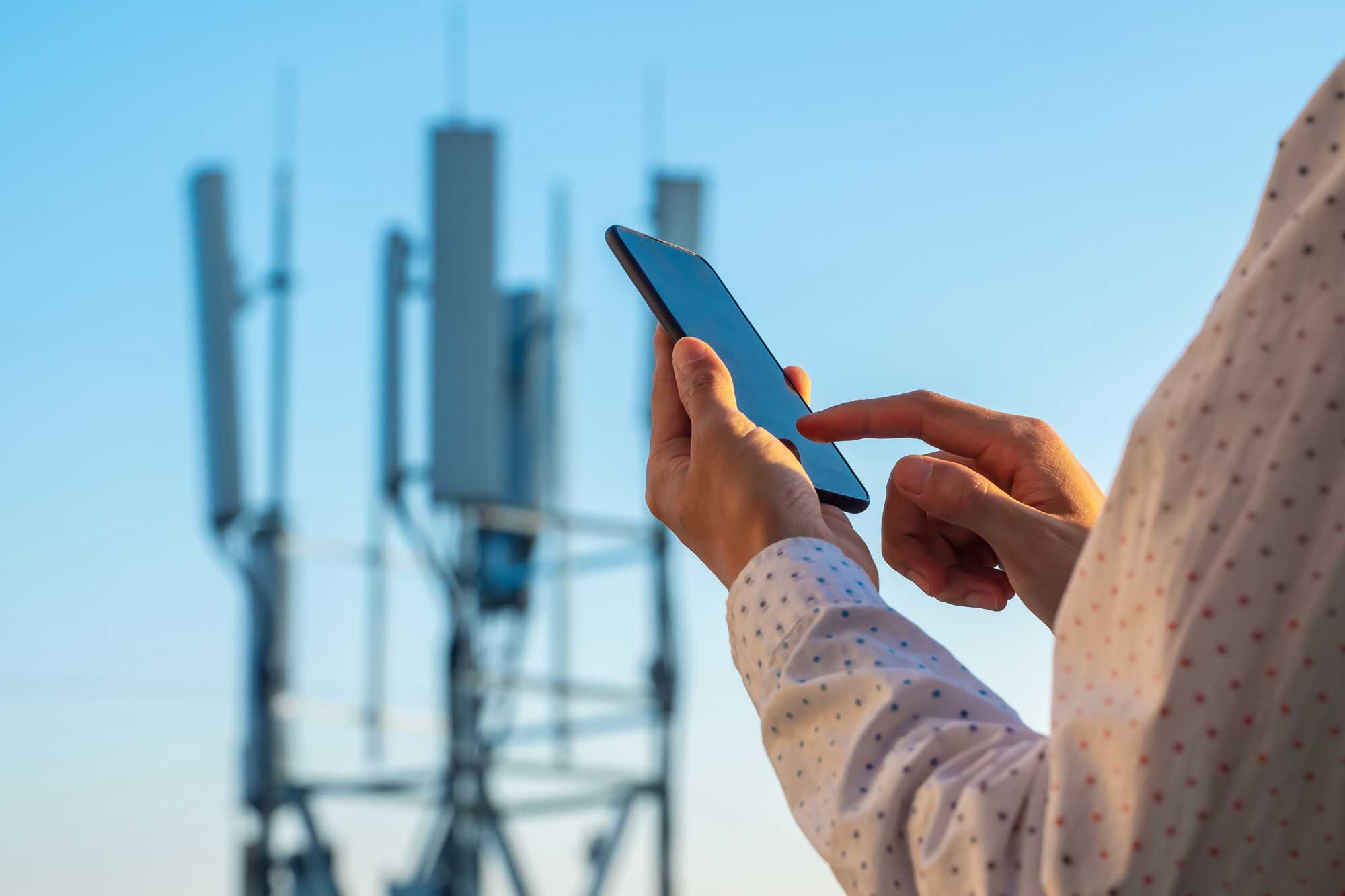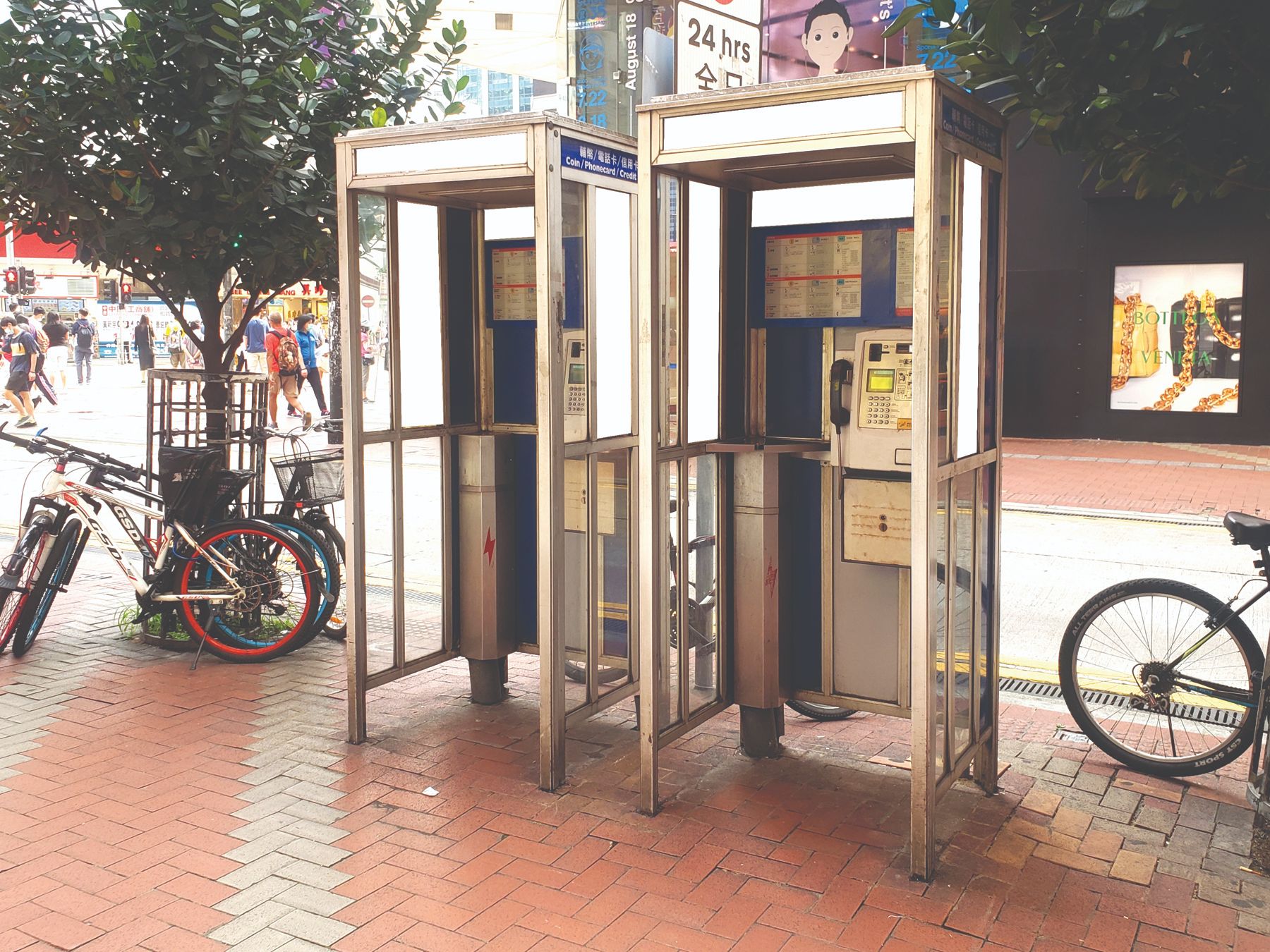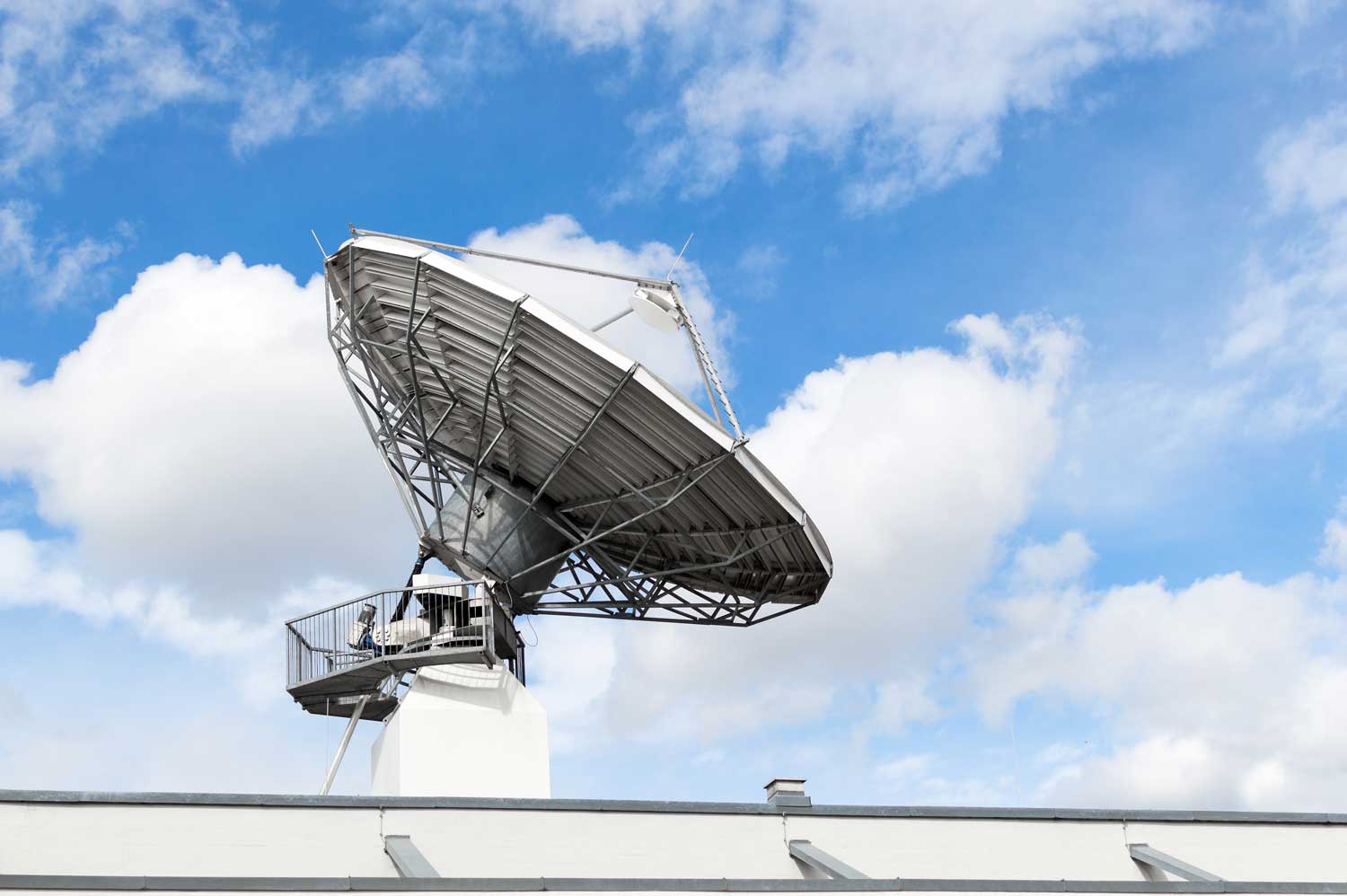Active Preparations for the 5G Era
Making 5G Spectrum Available in Multiple Frequency Bands for the Launch of 5G Services
The adoption of 5G technology will revolutionise mobile users’ experience with 5G’s cutting-edge technical capabilities for high speed, high capacity, high reliability, massive connectivity and low latency communications. It is widely
expected that 5G will open up vast potential for various commercial and smart city applications.

To enable the commercial launch of 5G services, a total of about 4 500 MHz of spectrum has been made available to the market in 2019, including 4 100 MHz of spectrum in the 26 GHz and 28 GHz bands for administrative assignment and
380 MHz of spectrum in the 3.3 GHz, 3.5 GHz and 4.9 GHz bands for assignment by way of auction.
Successful Conclusion of the Auction of the 5G Spectrum in the 3.3 GHz Band, 3.5 GHz Band and 4.9 GHz Band
OFCA conducted three auctions for the 3.3 GHz, 3.5 GHz and 4.9 GHz bands in succession from October to November 2019, starting with the auction of 200 MHz of spectrum in the 3.5 GHz band, followed by the auction of 80 MHz of spectrum
in the 4.9 GHz band and then the auction of 100 MHz of spectrum in the 3.3 GHz band.
All of the 380 MHz of spectrum was successfully auctioned off to the four incumbent MNOs at a total spectrum utilisation fee (SUF) of HK$1.9 billion, i.e. HK$1 billion for the 3.5 GHz band, HK$240 million for the 4.9 GHz band and HK$665
million for the 3.3 GHz band. The spectrum concerned has been assigned to the successful bidders for a period of 15 years.
Administrative Assignment of the Spectrum in the 26 GHz and 28 GHz Bands
In view of the ample supply of spectrum in the 26 GHz and 28 GHz bands, the CA has adopted an administrative approach for assignment of spectrum in the bands. Among the 4 100 MHz of spectrum available, 3 700 MHz of spectrum has been
set aside as non-shared spectrum for the provision of large scale public mobile services including 5G services. In April 2019, three incumbent MNOs were each assigned 400 MHz of the non-shared spectrum as per their applications.
OFCA will provide support to the CA to launch a second round of invitation for applications for 26 GHz and 28 GHz bands non-shared spectrum assignment around the end of 2020.
In addition, 400 MHz of spectrum in the 26 GHz and 28 GHz bands is set aside for assignment on a geographically shared basis to entities other than assignees of the non-shared spectrum for the provision of LWBS in specified locations
such as university campuses, industrial estates, the airport and technology parks. Licence application for assignment of up to 400 MHz of the shared spectrum for the provision of LWBS was open from July 2019. In October 2019, OFCA
supported the CA in granting the first LWBS Licence to the Airport Authority for the development of the smart airport initiative at the Hong Kong International Airport.

Making Available Additional New 5G Spectrum to Meet the Demand of Operators
OFCA has been continuing its efforts to identify and make available other suitable spectrum for the development of 5G and other innovative services. Apart from the availability of an additional 80 MHz of spectrum in the 4.9 GHz band,
the CA will also make available a total of 140 MHz of spectrum in the 600 MHz and 700 MHz bands, which will be vacated after ASO on 30 November 2020, for the provision of public mobile services (including 5G services). In this
connection, OFCA provided support to the CA and Secretary for Commerce and Economic Development (SCED) for joint public consultations launched in July and August 2020 respectively to seek the views of the industry and other interested
parties on the arrangements for frequency allocation and assignment for the spectrum in the 4.9 GHz band and 600 MHz and 700 MHz bands as well as the related SUF. The decisions on spectrum assignment arrangements will be promulgated
in 2021 after taking into account feedback received in the public consultations.

Facilitating the Rollout of 5G Networks
For the deployment of 5G services in Hong Kong, MNOs will need to establish a larger number of radio base stations as compared with previous generations of mobile services. To facilitate the expedient and effective rollout of 5G networks,
OFCA launched a pilot scheme in March 2019 to open up more than 1 000 suitable government premises for MNOs to install radio base stations with a streamlined approval process. OFCA has set up a dedicated team to coordinate with
MNOs and relevant government departments on the matters concerned, and issued the "Guidance Notes for Submission of Applications under the Pilot Scheme for Installation of Radio Base Stations at Selected Government Venues" to set
out the principles, requirements and streamlined procedures in respect of the applications under the scheme. As at September 2020, 126 applications were received under the scheme and 25 were approved. As a further policy initiative
to facilitate 5G network rollout under the Policy Address 2019, OFCA will assist operators under a “demand-led” model to identify and gain access to additional suitable government premises for installation of radio base stations.

OFCA has also been coordinating with the relevant government departments to facilitate MNOs’ access to suitable street furniture and public facilities such as public payphone kiosks and sheltered bus stops for the installation
of radio base stations. In April 2020, we issued the “Guidelines on the Use of Public Payphone Kiosks for the Installation of Radio Base Stations for Provision of Public Mobile Services” to facilitate the industry’s use of
the public payphone kiosks for installation of radio base stations. OFCA will continue the relevant work, including facilitating operators to conduct technical trials and formulating relevant guidance on application procedures
and requirements for use of sheltered bus stops to install radio base stations.
In order to ensure efficient operation of 5G networks in the 3.3 GHz and 3.5 GHz bands, having consulted all MNOs, OFCA provided technical support to the CA in issue of the “Guidelines for Setting the Frame Structure of Mobile
Networks Operating in Time-Division-Duplex Mode in the 3.3 – 3.6 GHz Band” in April 2020. OFCA will continue to provide technical guidance to the industry as necessary to facilitate effective implementation of 5G networks in
Hong Kong.
Facilitating the Industry to Conduct Trials for 5G Technologies and Applications
To better prepare for the launch of 5G services, as of 31 March 2020, OFCA had considered applications from the industry and issued a total of 57 trial permits to MNOs and equipment vendors with temporary, free-of-charge spectrum
assignment for test purposes.
Solving of Restriction Zones Issues
Enabling Controlled Deployment of Spectrum in the 3.5 GHz Band within the Restriction Zones in the Short Run
Since the 3.4 – 3.6 GHz (3.5 GHz) band will be re-allocated from fixed satellite service to mobile service with effect on 1 April 2020, the CA has delineated two restriction zones in Tai Po and Stanley to enable the coexistence
of the existing earth stations for telemetry, tracking and control of the licensed satellites in orbit (TT&C stations) and systems of public mobile services operating in the same and adjacent bands.
In tandem, to address the concern raised by the mobile industry on the restriction zones, OFCA established a working group in June 2018 comprising stakeholders including representatives of MNOs, operators of the TT&C stations,
Hong Kong Science and Technology Park and Hong Kong Applied Science and Technology Research Institute to study technical arrangements for enabling controlled deployment of radio base stations operating in the 3.5 GHz band within
the restriction zones without causing interference to the existing TT&C stations. After various studies of the working group, the CA approved its report and accordingly issued the guidelines entitled “Guidelines for Installation
of Radio Base Stations Operating in the 3.4 – 3.6 GHz Band within the Restriction Zones Delineated by the Communications Authority” in July 2019. Relevant requirements have been incorporated in the respective licences issued
to the successful bidders of the 3.5 GHz spectrum, such that MNOs can deploy 3.5 GHz radio base stations within the restriction zones in a controlled manner.
Facilitating the Removal of the 5G Restriction Zone in Tai Po
To resolve the issue of restriction zone in Tai Po in the long run, OFCA has been discussing with the concerned satellite operators the relocation of their satellite earth stations operating at the 3.5 GHz band from Tai Po to the
Chung Hom Kok Teleport, so that MNOs can make wider use of all the available 5G bands (including the 3.5 GHz band) in Hong Kong for the provision of 5G services. Relocation of the satellite earth stations involves complex
land and technical issues, including site selection, land grants, site formation, construction works and establishment of another set of satellite antennae, as well as the need to ensure that operation of the existing satellites
in orbit will not be affected. OFCA is working with the relevant bureaux and departments to facilitate the relocation of the concerned satellite earth station facilities, which is expected to take several years to complete.
Implementing the Subsidy Scheme for Upgrading Satellite Master Antenna Television Systems
Also arising from the re-allocation of the 3.4 – 3.7 GHz band from fixed satellite service to mobile service from 1 April 2020 for the provision of 5G services, all SMATV systems installed in buildings for receiving and distributing
satellite TV signals to serve occupants should only operate in the 3.7 – 4.2 GHz band from then on. The existing SMATV systems should also have technical upgrades implemented in order to co-exist with 5G systems operating
in the adjacent 3.4 – 3.6 GHz band after 1 April 2020.

The CA is mindful of the costs required for upgrading the existing SMATV systems which serve the general public and has implemented a subsidy scheme which runs from 27 November 2019 to 26 November 2020 to support the concerned
system upgrades. Under the scheme, some 1 600 SMATV systems covered by existing licences on or before 28 March 2018 would be eligible to apply for a one-off subsidy of HK$20,000 per SMATV system. The scheme is collectively
funded by all successful spectrum assignees of the 3.4 – 3.6 GHz band, i.e. the four MNOs, while OFCA administers the subsidy scheme on their behalf.
Facilitating Development of Wireless Internet of Things Services and Localised Wireless Broadband Services
Since the creation of a new licensing regime for the provision of Wireless Internet of Things (WIoT) platforms and services using the shared frequency band of 920 – 925 MHz by the CA in December 2017, three WIoT licences have
been issued. In addition, the existing MNOs may also make use of the frequency spectrum assigned to them under the Unified Carrier Licence to provide WIoT services by adopting mobile technologies such as Narrowband IoT
and 5G technologies that enable massive IoT connections. OFCA will continue to support the CA to facilitate the development and competitive supply of WIoT services in Hong Kong.
The LWBS Licence was created in July 2019 to enable the use of 400 MHz of spectrum in the frequency range of 27.95 – 28.35 GHz on a geographically shared basis for the provision of innovative wireless broadband services. Following
the issue of the first LWBS Licence in October 2019, OFCA provided support to the CA to process new LWBS licence applications so as to facilitate the development of innovative 5G and smart city applications at different
locations, such as university campuses, industrial estates and technology parks.

Implementation of the Re-assignment of Frequency Spectrum in the 900 MHz and 1800 MHz Bands
The current assignments of 50 MHz of spectrum in the 900 MHz band and 150 MHz of spectrum in the 1800 MHz band will expire in January and September 2021 respectively. While 20 MHz of spectrum in the 1800 MHz band will be re-assigned
administratively to each of the four incumbent MNOs, the remaining 120 MHz of spectrum (comprising 50 MHz of spectrum in the 900 MHz band and 70 MHz of spectrum in the 1800 MHz band) will be re-assigned to the four operators
pursuant to the results of the auction in December 2018, resulting in some of the frequency assignments in the two bands changing hands upon commencement of the new 15-year term of assignments.
OFCA convened a technical working group in May 2019 comprising representatives of all four MNOs to coordinate the relevant technical arrangements to reconfigure their existing networks and/or roll out additional network infrastructures.
OFCA will continue the work to ensure a seamless change over at the time of re-assignment of the spectrum in the 900 MHz band and 1800 MHz band in January and September 2021 respectively.
Preparing Proposals for Re-assignment of Frequency Spectrum in the 850 MHz and 2.5/2.6 GHz Bands
The current assignments of 15 MHz of spectrum in the 850 MHz band and 90 MHz of spectrum in the 2.5/2.6 GHz bands will expire in November 2023 and March 2024 respectively. OFCA provided support to the CA and SCED for the joint
public consultations launched in August and September 2020 respectively to seek the views of the industry and other interested parties on the arrangements for re-assignment of the spectrum concerned upon the expiry of the
existing assignments and the related SUF. The decisions on spectrum re-assignment arrangements will be promulgated in 2021 after taking into account feedback received in the public consultations.
Review of the Telecommunications Regulatory Framework by the Government
In 2019/20, OFCA provided support for CEDB in the review of the telecommunications regulatory framework under the Telecommunications Ordinance (TO) with a view to embracing the developments of 5G and Internet of Things technologies
and facilitating the trade. OFCA will continue to provide necessary support to the CA in relation to the review of the telecommunications regulatory framework conducted by CEDB and any future legislative amendments to the
TO. In parallel, OFCA will also introduce various streamlined administrative measures with the aim of further facilitating the operation of the industry.
Implementation of the Registration System for Class Licence for Offer of Telecommunications Services
CLOTS regulates persons who offer telecommunications services to the general public without the establishment of any means of telecommunications. OFCA assisted the CA to complete a review of the licensing regime of the CLOTS
in April 2019 for better consumer protection. Under the revised regime, licensees with a customer base of 10 000 subscriptions or more are required to register their business information with the CA. OFCA issued a set of
guidelines in August 2019 to facilitate CLOTS licensees to make registration. As of September 2020, 20 CLOTS licensees had been registered. OFCA will continue to assist the CA to ensure smooth operation of the registration
system.
Enhancement of Licensing Regime for Services-based Operators
OFCA supported the CA to enhance the Services-based Operators (SBO) licensing regime through extending the period of validity of the SBO Licence from one year to two years to enhance regulatory certainty, streamlining the categories
of services authorised under the SBO Licence, and adopting a new licence fee structure to ensure regulatory symmetry between the SBO Licence and other licences. The above enhancements have taken effect from August 2020.
Review of the Number of Public Payphones under the Universal Service Obligation
Public payphone service is a form of basic telephone service which the universal service provider (USP) is required to provide under its universal service obligation (USO). The cost of providing a public payphone service
subject to the USO is shared by the fixed and mobile services operators. In view of the diminishing demand for public payphone service in recent years, OFCA supported the CA to kick off a review of the reasonable number
of public payphones that should be subject to the USO in June 2017.

The review was completed in 2019. For in-building type public payphones, the CA decided to exclude 515 in-building type public payphones (about 35% of the total number of in-building type public payphones) from the
USO. All the excluded in-building type public payphones have been removed by the USP. For kiosk type public payphones, the CA decided to exclude 765 kiosk type public payphones (about 50% of the total number of kiosk
type public payphones) from the USO. The USP has started to remove the excluded kiosk type public payphones from the relevant locations, with about 23% of them dismantled as of March 2020.
Implementation of the Subsidy Scheme to Extend Fibre-based Networks to Villages in Remote Areas
In support of the Government’s policy initiative to provide financial incentives to telecommunications operators for encouraging the extension of fibre-based networks to remote villages, OFCA has implemented a subsidy scheme
with a funding of HK$770 million approved by the Finance Committee of the LegCo.
The Subsidy Scheme covers 235 villages across nine districts in the New Territories and outlying islands, which are located far away from the existing fibre-based backbone networks of fixed network operators, where villagers
can only choose broadband services delivered over copper-based networks at a speed of 10 Mbps or below.
The 235 villages were grouped under six projects for tendering purpose, and all projects were awarded to selected fixed network operators between November 2019 and May 2020 through tendering exercises. The selected fixed
network operators will roll out fibre-based lead-in connections to the vicinity of the entrances of the villages concerned, and three submarine fibre-based cables connecting Lamma Island from Hong Kong Island, Cheung
Chau from Lantau Island, and Peng Chau from Lantau Island respectively. To introduce competition, selected fixed network operators have to open up at least half of the capacity of the network facilities and submarine
fibre-based cables subsidised under the scheme for use by other fixed network operators for free.
OFCA is closely monitoring the implementation progress of the Subsidy Scheme and coordinate with the government departments concerned on matters relating to applications for permits and approvals for excavation works as
well as the roll-out of fibre-based networks and submarine fibre-based cables by the selected fixed network operators. The newly-built fibre-based networks will be extended to the villages concerned in phases from 2021
onwards.

Development of Fixed Broadband Services
With the continuous network rollout of fixed network operators, the Hong Kong community is able to enjoy nearly ubiquitous coverage of broadband networks deploying various technologies. As of March 2020, there were around
2.80 million residential and commercial fixed-broadband subscriptions, with a household penetration rate of 94%. Broadband services are now available at speeds of up to 10 Gbps. Around 82% of the fixed broadband subscriptions
are supported by broadband services with speeds of 100 Mbps or above.

According to a report issued by the Fibre to the Home Council Europe in March 2019, Hong Kong was ranked sixth worldwide in fibre to home/building household penetration among the 64 economies under comparison.
Landing of New Submarine Cable Systems in Hong Kong
With the support of OFCA’s single-point-of-contact service, nine new regional and transcontinental submarine cable systems, as well as two domestic systems are being constructed and planned for putting into service
between 2020 and 2023. In December 2019, the domestic submarine cable Ultra Express Link (between Tseung Kwan O and Siu Sai Wan) was put into service. OFCA will continue to assist operators in applying for the necessary
statutory approvals for construction and landing of new submarine cable systems in Hong Kong.
Facilitating the Disposal of Land Lots in Chung Hom Kok Teleport for Construction of External Telecommunications Facilities
In order to reinforce Hong Kong’s role as a regional telecommunications hub as well as to meet the growing demand for external telecommunications infrastructure in Hong Kong, we will provide suitable land lots in the
Chung Hom Kok Teleport for external telecommunications infrastructure, with a view to further enhancing the overall capacity and diversity of Hong Kong’s external telecommunications networks.
Preparatory work for tendering of the relevant land lots in the Chung Hom Kok Teleport has commenced. OFCA is working with the relevant bureaux and departments to make the relevant land lots available for the construction
of external telecommunications facilities in the coming few years.
Development of Hong Kong's Satellite Networks
Satellite spectrum and orbital positions are scarce natural resources. Use of these resources by communications satellites registered in Hong Kong should also comply with the coordination and notification requirements
of the ITU. In this regard, OFCA supports the licensed satellite operators of Hong Kong to attend satellite network coordination meetings with foreign administrations from time to time, and assists in the processing
of licences for the launching and operation of satellites in space orbits. Following the de-orbit of one satellite in 2019, there are now 11 satellites in orbit operated by two Hong Kong companies licensed to provide
satellite communications services.

Setting and Enforcing Telecommunications Standards
OFCA closely monitors international developments in telecommunications standardisation and updates local technical standards in order to meet the needs of the industry and the public. In 2019/20, four new technical
standards covering 5G base station and user equipment and one revised technical standard covering medical implant communication system devices were approved and issued by the CA after consulting the Radio Spectrum
and Technical Standards Advisory Committee.
Qualified local and overseas testing laboratories are now providing testing and certification services for various kinds of telecommunications equipment against technical standards prescribed by the CA. In particular,
local laboratories accredited by the CA as local certification bodies (LCBs) can offer a full range of telecommunications equipment testing and certification services. In 2019/20, LCBs and foreign certification
bodies issued 442 equipment certificates to meet the needs of the telecommunications equipment market.
To ensure that all LCBs providing telecommunications equipment testing and certification services meet the service quality and performance standards required by OFCA, OFCA will continue to closely monitor their performance
by conducting documentary checks, plant visits and reviews on a regular basis. So far, all LCBs have been performing up to the requirements set by OFCA.